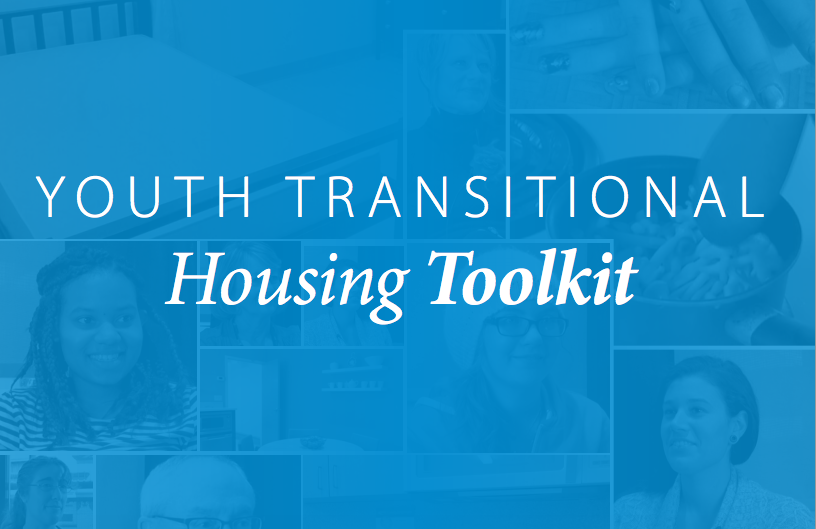This question came from Nichole F. in our latest website survey.
Youth face a number of barriers when it comes to housing due to supply and availability, income, education and discrimination. As a result, many make use of transitional housing, which can be considered a “stopgap measure” between emergency housing (shelters, drop-in centres, etc.) and stable housing. For youth, transitional housing with the right supports and services can also help them move from adolescence to adulthood; and provide opportunities to build skills that can help sustain their independence.
A report by the Canadian Mortgage and Housing Corporation (CMHC) wrote that:
The overall objective of transitional housing is to provide people with the structure and support they need to address critical issues necessary to maintain permanent housing and maximize self-sufficiency. At minimum, it is hoped that program “graduates” will not use the emergency shelter system or become homeless again.
In the same report, case studies showed that while transitional housing is more effective than emergency services alone – and for some people there was a short-term improvement in housing status – other improvements are modest and varied. Indeed, there isn’t much research on the effectiveness of transitional housing in preventing future homelessness. Some exceptions includes the report Live, Learn, Grow, which summarizes existing research on the Foyer model of transitional housing; a study of Eva’s Phoenix, a Toronto-based program with positive outcomes, and Peel Youth Village. The long-term effectiveness of such programs remains unclear.
There are a few issues with transitional housing as a response to homelessness. In a 2007 review of housing options for Vancouver youth, Eberle Planning and Research critiqued these programs because:
“1) Transitional programs reward those who do well by requiring them to move on; and
2) They can only be effective if affordable independent housing is available to move to afterwards.”
Given the lack of affordable housing in Canada, expecting youth to be able to move into stable and independent housing isn’t always realistic. There are also youth who may need ongoing support due to disability, mental and/or physical health issues. For many, transitional housing – despite being officially time-limited – ends up being home for people for much longer than initially intended. Another issue is that youth transitional housing is always limited by age, which puts a timeline on how long they can receive support from youth-specific agencies.
 Promising practices for youth
Promising practices for youth
We recently released the Youth Transitional Housing Toolkit, which collects much of the existing evidence on transitional housing for youth, as well as promising practices based on programs at Covenant House (Toronto and Vancouver).
The Foyer model of transitional housing is being used more and more because it provides life skills (cooking, finance management, building healthy relationships, etc.) and encourages residents to be employed and/or attending school and/or training. According to the toolkit: “This is particularly helpful in the case of younger teens and those leaving juvenile detention/corrections centers or child welfare.”
This model is much more flexible than traditional transitional housing programs, as it allows youth to stay longer and make use of convertible leases (agreements that can be transferred between the youth and the agency). Housing itself is either in the form of congregate living facilities, scattered site models or a combination of the two (Hub and Spoke models). This kind of approach offers youth variety and choice in finding housing and services that meets their needs.
The toolkit outlines some important criteria for effective transitional housing for youth:
-
“A focus on helping disadvantaged young people who are homeless or in housing need – including young people leaving care - to achieve the transition to adulthood and from dependence to independence.
-
A developmentally-appropriate environment to build competence and a feeling of achievement.
-
A holistic approach to meeting the young person’s needs based on an understanding of adolescent development.
-
A formal plan and agreement between the Foyer and young person as to how the Foyer’s facilities and local community resources will be used in making the transition to adulthood.
-
A supported transition that is not time limited, in which young people can practice independent living.
-
An investment in education, training, life skills and meaningful engagement in order to improve long-term life chances.
-
The provision of a community of peers and caring adults with emphasis on peer mentoring.
-
The provision of necessary and appropriate aftercare to ensure successful transitions to adulthood and independent living.”
In short, effective transitional housing for youth should go beyond simply putting a roof over their heads and also focus on fostering life skills, healthy relationships and independence. It should also aim to be a positive and accepting place for LGBTQ2 and Indigenous youth, who experience higher rates of homelessness than other youth. For more information, check out:
More Than a Roof: Best Practices for Transitional Housing Models for Youth in Halton
Becoming Adults: One-Year Impact Findings from the Youth Villages Transitional Living Evaluation
Coming of Age: Reimagining the Response to Youth Homelessness in Canada
This post is part of our Friday "Ask the Hub" blog series. Have a homeless-related question you want answered? E-mail us at thehub@edu.yorku.ca and we will provide a research-based answer.

